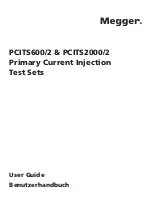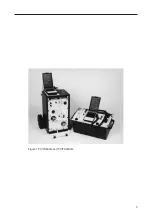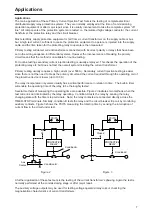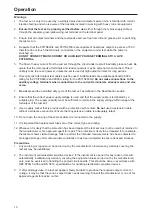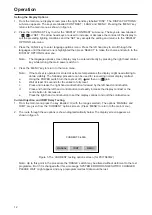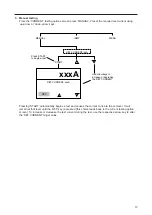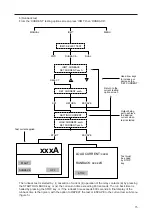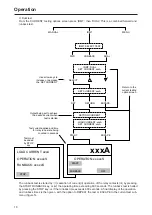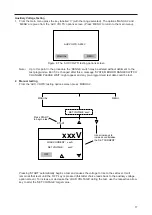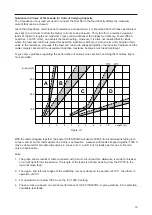
results appear on the display screen. Three tactile membrane key switches on the controller are used to
operate the test set. Each key is allocated more than one function during the test procedure, and these
functions are indicated on the display at the relevant point in the programme.
Time Counter (IDMT Testing)
Each test set has a built-in time counter for measuring the time the relay under test takes to operate, or to
reset itself. The relay’s contact-set, is connected to the TIMER STOP terminals allowing the ‘operation’
and/or ‘runback’ times to be measured at the instant the contacts change state. The TIMER STOP inputs
accept either unenergised or 100-264 V a.c./d.c. energised contacts. Note that the PCITS600/2 and
PCITS2000/2 differ from the original versions of the PCITS regarding this feature.
For IDMT testing, the time counter is started when the test current is applied and stopped when the
contacts in the relay under test open or close. The test also stops upon cessation of current (due to load
disconnection) or by manual operation of the hand-held controller. In the ‘runback’ mode, the time counter
starts automatically when the relay contacts operate, or upon cessation of test current, but it must be
stopped using the hand-held controller.
In-built Protection Mechanisms
In-built protection mechanisms include both current overload and thermal protection in the form of circuit
breakers, high breaking capacity fuses and a thermal cut-out.
The current output circuit is protected against overload by two resettable circuit breakers; a short delay
breaker is in series with the variac output and a long delay breaker protects the input circuit. One or both of
these breakers will trip in the event of a significant overload current or fault occurring in the output control
circuit.
For thermal protection, a bi-metallic sensor is mounted in the main transformer which will operate if the duty
cycle is exceeded and an adverse temperature rise in the test set results.
For safety, the circuit has been designed such that when the contacts of the relay under test operate to stop
the time counter, the output of the test set is also switched off. The test set is reset if there is a power
supply failure.
The HBC fuses provide overload protection for the auxiliary output and the controller unit. The solid state
relay which controls the switching on and off of the current output is approved to BASEEFA and ULE86767
standards.
In addition to these protection features of the test sets, a further safety measure is incorporated. If voltage is
detected on the terminals during the setting-up routine, or in the IDMT test-suspension states, then the
variac will automatically wind down to the zero position to ensure that no output is possible and an error
message will be displayed.
Current Setting Capability
The PCITS uses a variac to drive the main output transformer which supplies the required test current. Due
to the variac’s finite winding resolution it is not generally possible to establish a test current that exactly
matches the programmed value. The situation worsens as the load resistance (load plus leads) decreases
since only a small portion of the total variac winding might then be used for setting the required test current.
This can produce a test current which deviates from the programmed value.
To improve the setting accuracy a longer lead set could be used. Additionally the instrument should, if
possible, be used on the high current (low voltage) range to lower the voltage output per winding of the
variac.
The PCITS600/2 normally sets the test current to within 1 A of the programmed value when supplying
higher resistance loads. For the wider range PCITS2000/2 this figure may increase to 3 A. This arises due
to the measurement resolution being 0,2% of the full scale indication.
General Description
6
Summary of Contents for PCITS2000/2
Page 1: ...M PCITS600 2 PCITS2000 2 Primary Current Injection Test Sets User Guide Benutzerhandbuch...
Page 5: ...5 Figure 1 PCITS600 2 and PCITS2000 2...
Page 23: ...23...
Page 37: ...37...
Page 38: ...38...

